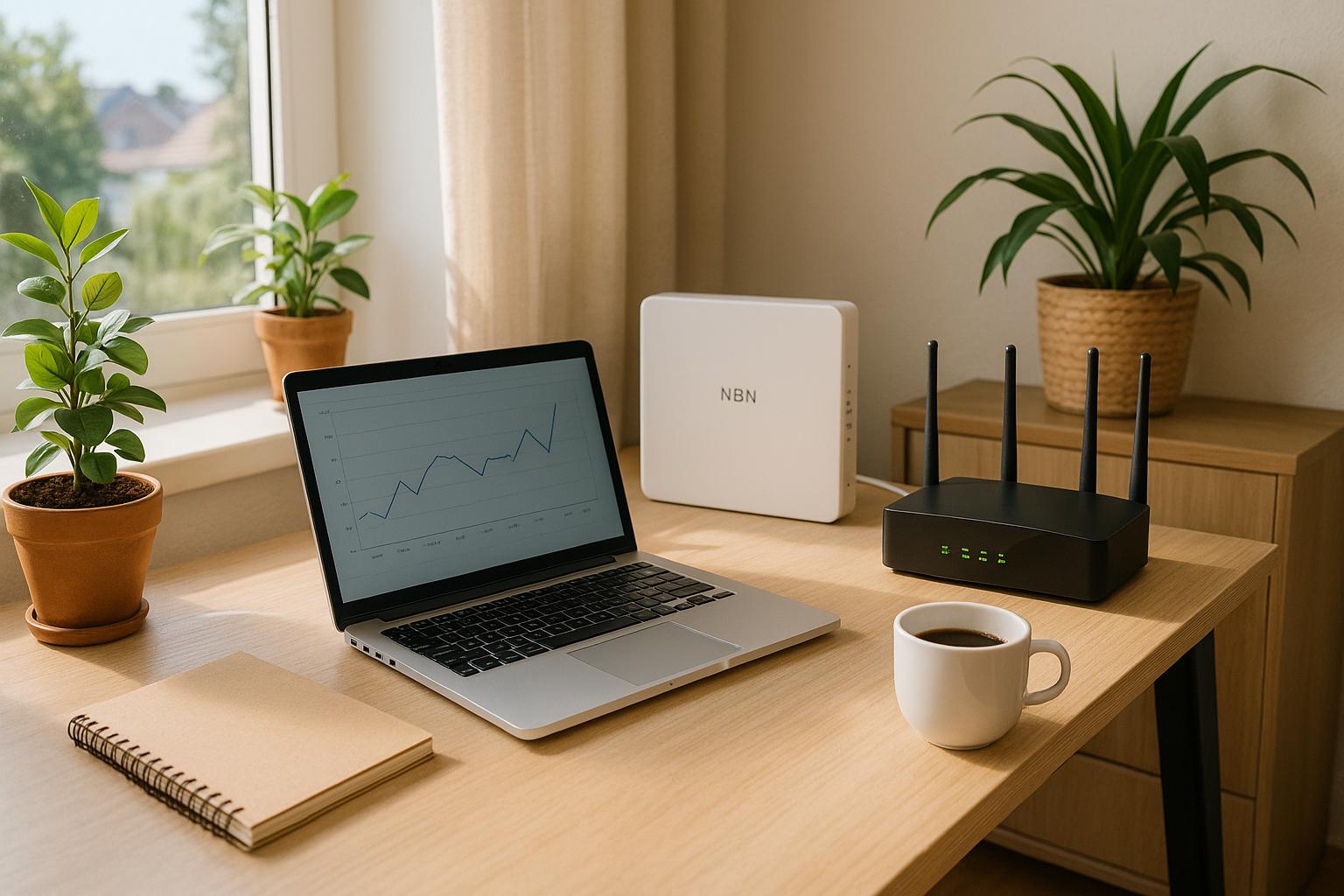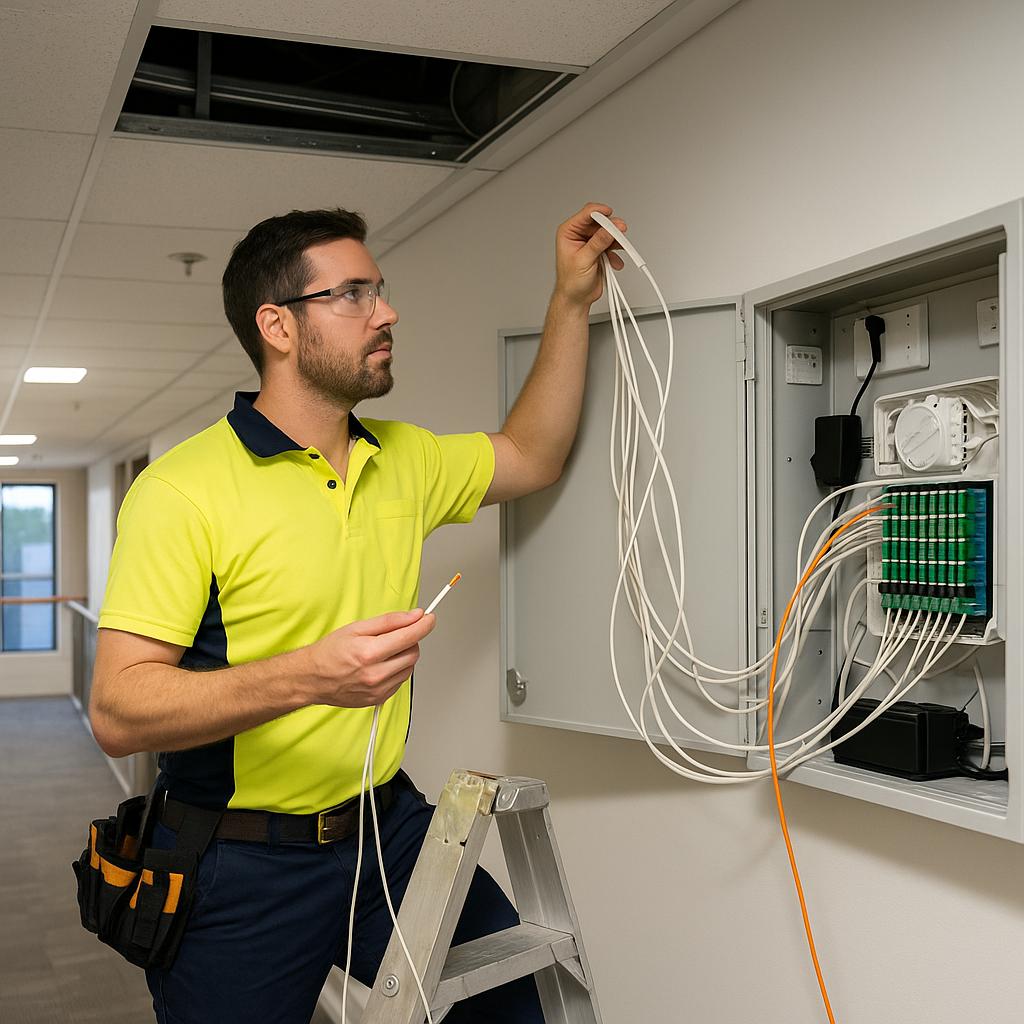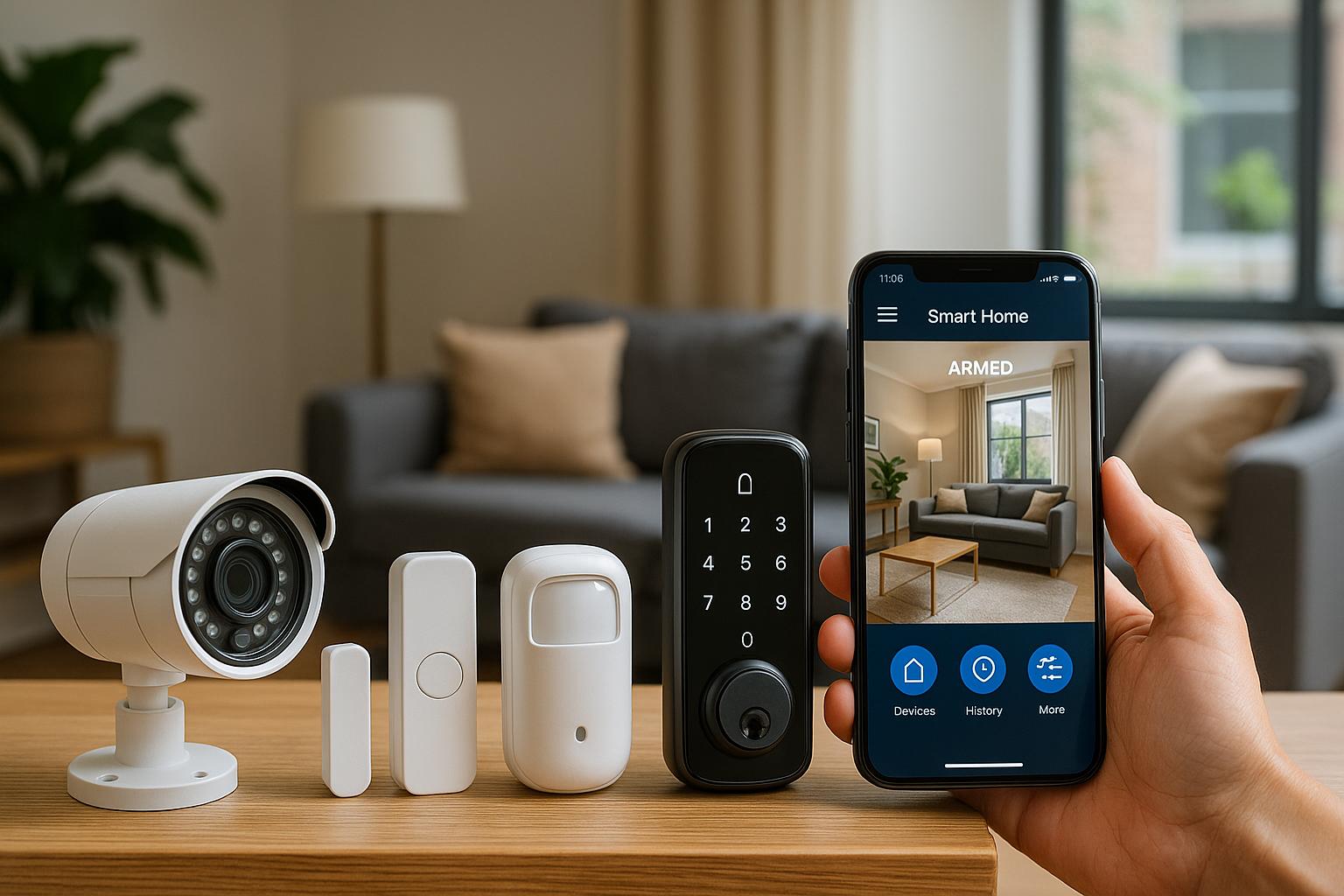You’ve run an NBN speed test and now you have a screen full of numbers. Download. Upload. Ping. Maybe even jitter.
You’re staring at them like they’re written in code. Do they mean your internet is good? Bad? Average? Or are you being ripped off by your provider?
The truth is, most Aussies don’t know how to properly read their NBN speed test results. They’ll look at the download number, shrug, and call it a day. But that’s like glancing at your car’s fuel gauge without noticing the flat tyre or the flashing check-engine light. There’s more going on under the hood, and those numbers can tell you a lot about how well your internet is performing.
However, not all the numbers in a speed test are equally important. Some matters every single day when you’re working, gaming, or streaming. Others only come into play in certain situations. And some are red herrings that internet providers would love you to ignore.
In this guide, the team at RBE Internet will explain your NBN speed test in plain English. By the time you’re done, you’ll know how to read your numbers properly, and when it’s time to push back on your provider.
What Is an NBN Speed Test?
An NBN speed test is a quick way to check the performance of your internet connection at that specific moment. It sends data packets from your device to a nearby server and back again to measure how quickly the information travels.
The test gives you four main results:
- Download Speed: How fast data comes to you (streaming Netflix, loading websites, downloading files).
- Upload Speed: How fast data goes from you (video calls, sending files, uploading photos).
- Ping (Latency): How quickly your device gets a response after sending a request (critical for gaming and video calls).
- Jitter: How stable your connection is (fluctuations in latency can cause lag or dropouts).
There are plenty of free tools you can use. The most common are Ookla’s Speedtest, Fast.com (by Netflix), and the Google speed test that pops up right in your search results. They all work in a similar way and give you a snapshot of your NBN speed within seconds.
Remember, a speed test only measures your internet at that exact point in time. It doesn’t show a long-term average, and your results can change depending on the time of day, how many people are online in your home, or even which device you’re using.
We recommend running a few tests at different times to get a clearer picture of how your NBN performs.
When and How to Run an Accurate Speed Test
Running a speed test NBN isn’t hard, but getting reliable results takes a little know-how. If you want a true picture of how your internet is performing, you need to set up the test properly and repeat it a few times.
The Best Conditions for Testing
First, use Ethernet, not Wi-Fi. Wi-Fi adds interference that can make your speeds look worse than they are. Plug your computer directly into your modem or router for the most accurate numbers.
Second, limit other devices. If your kids are streaming YouTube or your partner’s on a video call, it’ll drag down your results. Try to test when no one else is online.
Third, keep it simple. Close background apps or updates that could be quietly using your internet while you test.
Test at Different Times of Day
NBN speeds often drop during peak hours (around 7–10 pm). To see the real story, run tests at different times: morning, afternoon, and evening. This shows how your provider holds up when the network is under pressure.
Run Multiple Tests Over a Few Days
One test is just a snapshot. Run a few tests over several days to spot patterns. If you keep seeing slower speeds at certain times, it’s a good indicator your provider is struggling with congestion.
A Simple Step-by-Step
- Go to a trusted tool like Fast.com, or search “Google speed test.”
- Connect your device directly to your modem with an Ethernet cable.
- Make sure no one else is online.
- Click “Go” (or “Start”).
- Record your download, upload, and ping results.
- Repeat at different times of day, over a few days, and compare your numbers.
The more tests you run, the clearer the picture of your NBN performance will be. That way, you’ll know if a slow night is just a one-off, or if it’s time to have words with your provider.
What Your Speed Test Results Mean
Looking at your NBN speed test results can feel like reading a foreign language, but each number tells a clear story about how your internet behaves. Here’s the breakdown.
1. Download Speed
Download speed is the measure of how quickly data reaches you when you stream Netflix, browse, download files, or scroll socials. The faster it is, the smoother everything feels. Slow download speeds, on the other hand, cause buffering videos and sluggish pages that test your patience.
To put things in perspective, the ACCC reported that in March 2025 the average download speed for NBN “very high speed” services was 879.7 Mbps across all hours, dropping only slightly to 875.1 Mbps during the busy evening peak. That shows how far the network can go when it’s performing at its best.
2. Upload Speed
Upload speed is the water leaving your tank. It measures how quickly you can send data out. If you’re on Zoom calls, uploading files to the cloud, or posting videos, upload speed matters just as much as download. Weak uploads cause glitchy calls and never-ending file transfers.
3. Ping (Latency)
High latency makes online games lag and video calls awkward, with people talking over each other. The lower the number, the quicker your connection responds.
4. Jitter & Packet Loss
These are the wobbles in your connection. Jitter measures how stable your ping is: low jitter means smooth performance, while higher jitter means your connection is unpredictable.
Packet loss happens when bits of data never make it to their destination. A small amount isn’t noticeable, but higher levels lead to frozen calls, stuttering streams, and unexpected dropouts.
What Are Good NBN Speed Test Results?
When you look at your NBN speed test results, the numbers should line up with the speed tier you’re paying for. The most common plans are:
25/5 Mbps: Fine for basic browsing, emails, and one or two devices streaming in standard definition.
50/20 Mbps: A great middle ground for households, supporting HD streaming, remote work, and a few people online at once.
100/40 Mbps: Best for larger families, gamers, or small businesses where multiple people are streaming, uploading, or on video calls at the same time.
As a rule of thumb, your real-world NBN speed should hit around 85–90% of your plan during off-peak hours. If you’re consistently well below that, especially in the evenings, it’s worth checking with your provider about network congestion or possible line issues.
Why You May Not Be Getting the Speeds You Pay For
Running an NBN speed test and seeing disappointing numbers doesn’t always mean your provider is flat-out failing. There are plenty of reasons why your NBN speed might fall short of your plan:
Everyday Causes
If your NBN speed test results aren’t lining up with your plan, the issue isn’t always with the provider. Evening congestion is one of the biggest reasons speeds dip, when everyone in your street is streaming or gaming, performance takes a hit.
Inside your home, a poor Wi-Fi setup, old or faulty cables, or a modem that’s past its use-by date can slow things down. Some providers also manage traffic during peak hours, which can mean your connection is quietly throttled when demand is highest.
Rural-Specific Issues
For regional homes and businesses, extra challenges often make things worse. Distance from the node can weaken the signal before it even reaches you. Interference from sheds, trees, or farm equipment can play havoc with wireless connections.
Then, there’s the weather. Heavy rain or storms can disrupt fixed wireless services and cause noticeable drops in NBN speed.
How RBE Can Help
At RBE Internet, we help regional Australians get more from their NBN by diagnosing the real cause of poor speeds and fixing it, either by upgrading outdated gear or setting up stronger Wi-Fi coverage.
With the right adjustments, your NBN speed test results will look much closer to the numbers you’re paying for.
What to Do If Your NBN Speeds Are Too Low
If your NBN speed test keeps coming back with poor results, start with a few quick fixes. Restart your router, update or upgrade your modem, reposition your equipment away from walls or metal objects, and, if possible, use an Ethernet cable instead of Wi-Fi for a stronger connection.
If the problem sticks around, contact your provider or consider switching. And if you’re in a regional area, don’t assume slow speeds are just part of the deal. With the right setup, it’s absolutely possible to improve NBN speed, and RBE can help you get there.
Final Thoughts
NBN speed test results don’t need to feel like hieroglyphics. Once you know what the numbers mean, you can see straight away whether your connection is healthy or whether your provider is dropping the ball.
So, the next time you run a test, don’t just glance at the download speed. Look at the whole picture, and you’ll know whether your internet is running strong or whether it’s time to call your provider and demand better. Ready for faster, more reliable internet? Call RBE Internet today to book your consultation or site assessment and discover how we can improve your NBN performance.



